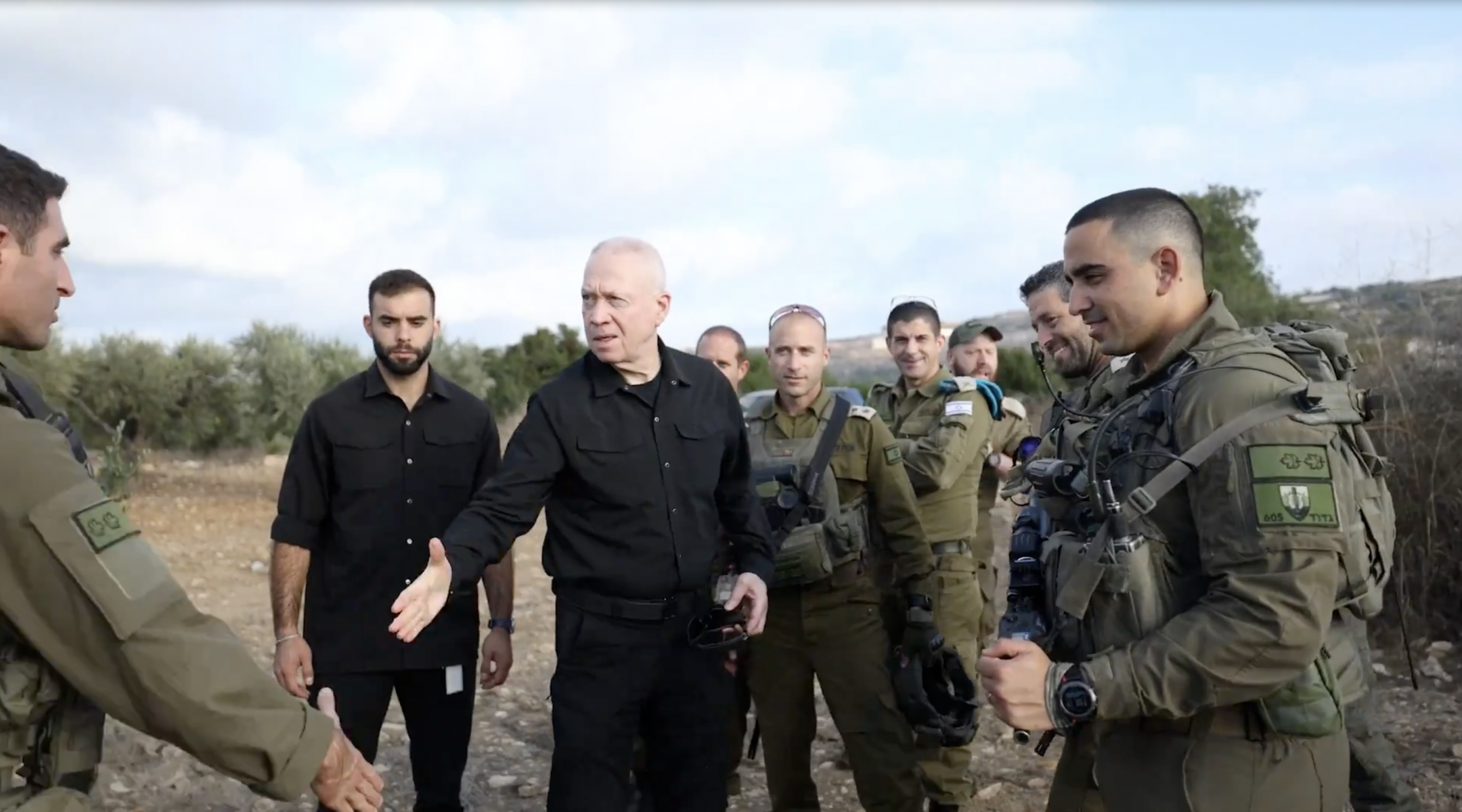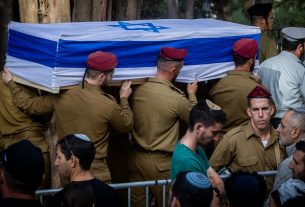Fighting is underway between Israeli troops and Hezbollah fighters along the Israel-Lebanon border.
What is yet unclear: How many will fight, how long they will stay there, how many people will be killed and whether the blazing conflict between Hezbollah and Israel, after a year of bloodshed, will cross the tipping point into a broader regional conflict. Also unclear is what it will take to secure Israel’s north enough that civilians who have been evacuated from the region for nearly a year can safely return.
What is clear is that Israel seems intent on striking a decisive blow against a terror group that has, for decades, posed a formidable threat — even in the face of potentially steep costs. Over the past year, Hezbollah has rained missiles on Israel on a near-daily basis, with Israel returning fire.
For all of that time, the conflict seemed like a sideshow compared to the focus of Israel’s military campaign: the grueling war against Hamas in Gaza. But over the past two weeks things have changed: Israel has killed Hezbollah’s leader and several of his deputies; depleted the terror group’s missile stock; and girded its own population for yet another war on its border.
Israelis appear to support a war in Lebanon. But previous invasions into the country have had inconclusive results and cost Israel in terms of the lives of its soldiers and its international standing.
Here’s what to know about Israel’s incipient Third Lebanon War.
Israel and Hezbollah have been fighting for a long time.
The first few decades of Israel’s existence saw it fight repeated wars against Egypt and Syria. The past few decades have seen it fight repeated wars against Hamas and Hezbollah.
Hezbollah was founded in the wake of Israel’s 1982 invasion of Lebanon. That invasion was aimed primarily at another erstwhile foe — the Palestine Liberation Organization. But soon Israeli soldiers found themselves fighting Hezbollah, an Islamist terror group dedicated to Israel’s destruction.
Israeli soldiers occupied a strip of southern Lebanon until 2000, primarily facing attacks from Hezbollah, which also killed hundreds of American soldiers in two attacks in 1983 on the U.S. Embassy and a military barracks.
Six years later, the two sides clashed again when Hezbollah kidnapped two Israeli soldiers. Israel invaded Lebanon again, but the war is considered a fiasco in Israel: More than 100 Israeli soldiers and hundreds of Hezbollah fighters were killed, as were dozens of Israeli civilians and more than 1,000 Lebanese civilians.
Most importantly, Hezbollah remained intact. The terror group has ignored a United Nations resolution calling on it to withdraw to north of the Litani River, which would have created a buffer in southern Lebanon.
Since then, Hezbollah has been Iran’s most well funded proxy, a force estimated at as many as 100,000 fighters (but with perhaps less than half that number) and hundreds of thousands of missiles. Its rockets could reach virtually all of Israel.
Since 2006, the group has proven a loyal and useful ally to Iran. Its fighters shored up Bashar Assad’s dictatorial regime in the Syrian civil war, and it has created what has been called a “state within a state” in southern Lebanon. It also has a significant presence in Lebanon’s parliament. On Monday, the New York Times called it the “senior member” of Iran’s so-called “Axis of Resistance” in the Middle East.
Over that time, Israel has regularly bombed weapons shipments to Hezbollah. But until last fall the two sides had refrained from another major conflict.
Hezbollah started bombing Israel on Oct. 8. That was only the beginning.
A day after Hamas invaded Israel, Hezbollah started shelling Israel’s north. The missiles have continued unabated for nearly a year, aside from when Hezbollah abided by the weeklong truce between Israel and Hamas in November.
Israel has bombed Hezbollah positions in Lebanon, and altogether, hundreds of the group’s fighters have been killed, as were dozens of civilians on both sides. The border area in both countries is a no-man’s-land. And with tens of thousands of Israelis from the north living as evacuees in hotels for nearly a year, support for striking a harsher blow against Hezbollah has risen.
A survey last month found nearly two-thirds of Israelis overall support fighting Hezbollah, while only about a quarter support a ceasefire deal with the group.
And Israel seems like it’s heeding that call. The last few weeks have seen a series of eye-popping operations from Israel’s military and intelligence systems: exploding pagers that wounded thousands and killed dozens; strikes on Hezbollah leaders; explosions of Hezbollah weapons depots. More than 1,000 people have been killed in Lebanon.
Then, over the weekend, Israel killed the group’s leader, Hassan Nasrallah. He was the face and embodiment of Hezbollah — its leader for more than 30 years and an archnemesis of Israel. An analysis from the Council on Foreign Relations concludes, “The group has likely been rendered operationally inert — at least for the foreseeable future. Indeed, there are no clear successors to Nasrallah given his unique and unrivaled stature at the top of the movement.”
Yet the group is signaling that it has a lot of fight left. In a videotaped address released Monday, a top Hezbollah official said all of the slain members could be replaced and said the attacks on Israel so far represented a “minimum” effort for the group.
Now Israel is preparing for a ground war. It won’t be easy.
Israel isn’t stopping with Nasrallah’s assassination. Reports on Monday indicated that Israeli forces and artillery are fighting on the border and that troops are massing for an invasion. It has reportedly notified the United States of its plans for a ground operation.
Israeli soldiers have been conducting training exercises on Lebanon’s border for months, in anticipation of a war to clear Hezbollah out of a range where it can shoot anti-tank fire at Israeli towns, removing a major threat. The pager operation also revealed that Israel has been tracking and plotting against the terror group for a long time. So in a sense, as opposed to when it was caught flat-footed on Oct. 7, Israel’s military may be prepared for fighting in Lebanon.
But as many Israeli combat veterans know from previous conflicts, Lebanon is an unforgiving terrain. It’s mountainous, and, even leaderless, Hezbollah has long been entrenched there. Southern Lebanon is much larger than Gaza, where Israel has been fighting a difficult war for a year — though it has many fewer residents.
“Hezbollah today is far more formidable [than in 2000], and even if it suffered more losses than it felt it could handle, the bulk of its forces could retreat away from the border region and simply return when Israel left, or conduct regular guerrilla attacks at a time of its choosing should Israeli forces stay,” an analysis in Foreign Policy concluded.
There is also the question of what another war will do to Israeli society. Israel sent hundreds of thousands of soldiers to the front after Oct. 7, with many men spending months away from family and work. Hundreds have been killed in Gaza. While there is broad Israeli support for increased fighting in Lebanon to end the missile fire from the north, it also means another massive call-up of already exhausted Israeli reservists — just as Israelis had hoped to carve out a measure of solace during High Holiday season.
The United States supports Israel. For now.
President Joe Biden and Kamala Harris, the Democratic presidential nominee, both defended the assassination of Nasrallah and have continued funding Israel’s military effort. But Biden has also been publicly calling for a ceasefire in the north alongside his so far fruitless efforts to reach a ceasefire in Gaza.
What will that mean if a Lebanon war drags out? Donald Trump has appeared supportive of Israel’s military efforts but also has an isolationist bent and called on Israel to finish its fight quickly. Harris is already facing pressure from her left flank to reduce or end her support for Israel’s war in Gaza. Many of those same voices, in Congress and beyond, have condemned Israel’s strikes in Lebanon and would no doubt push Harris to cut off support for a Lebanon war.
The United States has also worked for the past year to prevent a broader regional war. If Iran attacks Israel to avenge Nasrallah’s death, that scenario could unfold, turning the Middle East into one large war zone.
Following the strike on Nasrallah, Israeli Prime Minister Benjamin Netanyahu warned Iran that Israel could attack its territory as well. And in remarks on Monday, he suggested that his citizens prepare for another war.
“I would like to stand by our heroic soldiers, conscripts and reservists,” he said. “While we celebrate the new year, may it be a good one, they will continue to defend our country with that same dedication, sacrifice and heroism that they have shown throughout the past year.”
He added, “Finally, I would like to thank all citizens of Israel: The reservists’ wives, the mothers and fathers of our fighters, and the children, for being steadfast throughout such a long period. We are in a war for our very existence. We will unite, go hand-in-hand and defeat our enemies.”
Support the Jewish Telegraphic Agency
Help ensure Jewish news remains accessible to all. Your donation to the Jewish Telegraphic Agency powers the trusted journalism that has connected Jewish communities worldwide for more than 100 years. With your help, (JEWISH REVIEW) can continue to deliver vital news and insights. Donate today.




